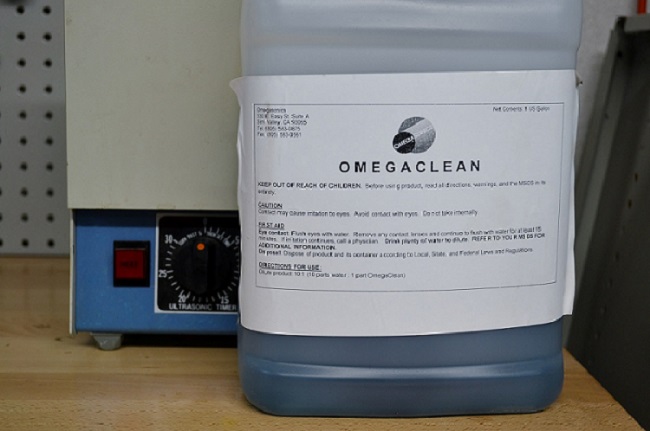
Top 3 ways to clean a chainsaw carburetor 2023
Posted by Andres on Feb 3rd 2017
Chainsaw Carburetor
Welcome To The Blog! Enjoy!
We want to start off by saying welcome to the blog! Thanks for stopping by to check up on us. Stick around for useful tips and maybe you'll learn something new if you read...
Today, we want to talk critical problems with carburetors To start, we at Sawzilla Parts have information we'd like to share with our customers and readers. Did you know that the number one problem we run into in the shop revolves around fuel issues?
That's not all folks; Sawzilla Parts gets asked a few questions every now and then by some of our customers, so let's switch over to a FAQ session real quick..
FAQ#1: What is the best way to clean a carburetor?
There are a few ways to clean a carburetor. For starters, you can go to the store and pick up a cleaning kit of some sort. You can also try a homemade concoction if you'd like. Remember, whether you decide to use the store bought method or the homemade one, we want to warn you to be careful with the carburetor!
FAQ#2: What is the safest way to clean a carburetor?
When wanting to clean a carburetor, we advise you to use caution to avoid damaging said carburetor. When we started cleaning small engines like this, we used a simple yet effective method of gasoline and a brush. However, changed over to mineral spirits as well as a brush. In fact, this ties in nicely with our next bit of info.
Did you know that Walbro, a carburetor manufacturer, highly recommends their customers to use the mineral spirits and brush method? After all, who would know about cleaning a carburetor better than the carburetor manufacturer themselves?
Ultrasonic Cleaning your Chainsaw Carburetor
Mineral spirits can be purchased at any hardware store. In fact, our growing business is changing the way we clean carburetors, so that it is both effective and efficient. Recently, we have made an investment towards an ultrasonic machine; this has been by far the best and most economical method for us. Currently, we are using an Omeagaclean solution made by omegasonics This specific design is used to clean carburetors; it contains buffers to protect aluminum. Oh, and did we mention its eco-friendly? No worries there!

Using an ultrasonic cleaner can make the process faster and more efficient. We'll walk you through the process of cleaning a chainsaw carburetor with an ultrasonic cleaner, ensuring optimal maintenance and a longer lifespan for your chainsaw.
Step 1: Gather the necessary materials
- Ultrasonic cleaner
- Chainsaw carburetor cleaning solution
- Screwdriver or wrench set
- Protective gloves and goggles
Step 2: Remove the chainsaw carburetor
- Disconnect the spark plug wire to prevent accidental starting.
- Use a screwdriver or wrench to remove the screws securing the carburetor cover.
- Carefully detach the carburetor from the engine.
Step 3: Disassemble the carburetor
- Take note of the carburetor's parts and their positions to aid reassembly.
- Use a screwdriver or wrench to remove the screws or bolts holding the carburetor together.
- Gently separate the carburetor components, such as the float, needle, jets, and gaskets.
Step 4: Prepare the ultrasonic cleaner
- Fill the ultrasonic cleaner tank with the recommended chainsaw carburetor cleaning solution.
- Follow the manufacturer's instructions regarding the solution's concentration and temperature.
- Ensure the cleaner is turned off and unplugged before proceeding.
Step 5: Submerge and clean the carburetor
- Carefully place the carburetor components into the ultrasonic cleaner's basket.
- Lower the basket into the cleaning solution, ensuring that all parts are fully submerged.
- Turn on the ultrasonic cleaner and set the recommended cleaning time (10 minutes).
Step 6: Rinse and dry the carburetor
- After the cleaning cycle is complete, carefully remove the carburetor components from the cleaner.
- Rinse the components thoroughly with clean water to remove any remaining residue.
- Use compressed air or a clean cloth to dry the parts completely.
Step 7: Reassemble and reinstall the carburetor
- Refer to your notes or carburetor diagram to ensure proper reassembly.
- Carefully reattach the cleaned carburetor components, including the float, needle, jets, and gaskets.
- Secure the carburetor back onto the engine and tighten the screws or bolts.
Step 8: Test the chainsaw
- Reconnect the spark plug wire.
- Start the chainsaw and let it run for a few minutes to ensure proper functioning.
- Check for any leaks or abnormal performance. Adjust if necessary.
Despite the cost of an ultrasonic machine they do a really good job at getting to those hard to reach spot. Remember to always prioritize safety and refer to your chainsaw's manual for specific instructions.
How to Clean a Chainsaw Carburetor Without Removing It
Now, lets assume your chainsaw’s carburetor hasn’t been cleaned in a long time. The best method to clean it is to take it apart and open it. Lets not risk having to take it parts twice so using a brush and cleaning solvent, thoroughly clean it. However, if you clean the carburetor regularly and know that the gum accumulation isn’t a major issue, you may clean it without the hassle of disassembling it. A carburetor cleaning liquid is required to clean a carburetor without removing or opening it. The following is the cleaning procedure:
Step 1
First, mix some carburetor cleaning solution into the gasoline of your chainsaw’s fuel tank. I suggest mixing 4 ounces of B12 carburetor cleaner into a tank of gas. Using a funnel, carefully pour the carburetor cleaning into the fuel tank.
Step 2
Start the chainsaw after combining the carburetor cleaner with the gas. Allow the chainsaw to run at low RPMs/idle for a few minutes. This allows the cleaner to pass through the carburetor, fuel systems, and idle engine.
The cleaner will wash away the sticky residue clogging the components, resulting in a clear path for the air and fuel. Turn down the idle dial when the RPMs begin to rise.
Step 3
If you want to properly clean your chainsaw’s carburetor, spray some B12 in the pilot air jet. It is normally kept from view so check your chainsaw’s owner’s handbook to determine where the carburetor’s pilot air jet is located.
Step 4
To make sure the cleaner did its job run chainsaw at full throttle if it starts effortlessly and continues to operate at high speed with no signs of speed or power decrease (bogging) your carburetor is cleaned.
As always, thanks for stopping by, and have a great day! We hope to hear good questions, so why not contact us, and your question can be featured right here in the blog! Stay tuned for more!
Also, feel free to check out our carburetor kits here!
